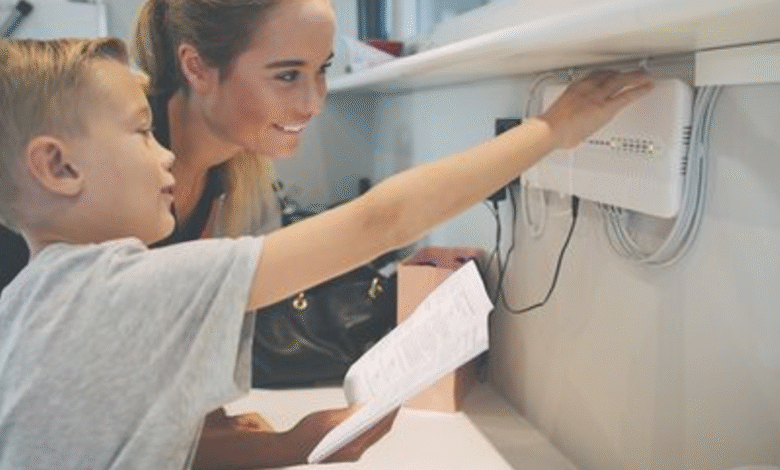How to Secure Your Home Wi-Fi Network from Hackers
Secure your home Wi-Fi network from hackers with these tips. Learn encryption, strong passwords, and router settings for maximum protection.

Securing your home Wi-Fi network is one of the most important steps you can take to protect your personal data and privacy. With the increasing number of connected devices in our homes, from smartphones to smart TVs, a vulnerable Wi-Fi Network can become an easy target for hackers. Cybercriminals can exploit weak security to steal sensitive information, spy on your online activities, or even hijack your devices for malicious purposes. Fortunately, by following a few key security measures, you can significantly reduce these risks and keep your network safe.
Many people assume their home Wi-Fi network is secure simply because it has a password, but this is often not enough. Default router settings, outdated firmware, and weak encryption can leave your Wi-Fi Network exposed to attacks. In this guide, we’ll walk you through the most effective ways to strengthen your Wi-Fi security, from changing default credentials to enabling advanced encryption protocols. Whether you’re a tech novice or an experienced user, these steps will help you create a more secure and hacker-resistant network.
How to Secure Your Home Wi-Fi Network from Hackers
Change the Default Router Login Credentials
Most routers come with default usernames and passwords, which are often easily found online. Hackers frequently exploit these defaults to gain unauthorized access. The first step in securing your network is to change these credentials to something unique and complex. Use a strong password with a mix of uppercase and lowercase letters, numbers, and special characters. Avoid common phrases or personal information that can be easily guessed. Additionally, consider changing the username if your router allows it, as this adds an extra layer of security.
Enable WPA3 Encryption for Stronger Security
Encryption is a critical component of Wi-Fi security. Older encryption standards like WEP and WPA2 are vulnerable to attacks. The latest WPA3 protocol provides stronger protection by using advanced encryption techniques. To enable WPA3, log in to your router’s admin panel and navigate to the wireless security settings. If your router doesn’t support WPA3, ensure WPA2-AES is selected as a fallback. Avoid using WPA/WPA2 mixed mode, as it can weaken security.
Create a Strong Wi-Fi Password
A weak Wi-Fi password is an open invitation for hackers. Many users set simple passwords like “password123” or their home address, making it easy for attackers to breach the network. Instead, create a long, complex password with at least 16 characters. Consider using a passphrase a combination of random words, numbers, and symbols that is easy for you to remember but hard for others to crack. For example, “Blue$ky!Mountain2024” is far more secure than “12345678.”
Disable Remote Management
Some routers offer remote management, allowing you to access settings from outside your home network. While convenient, this feature can be exploited by hackers to take control of your router. Unless absolutely necessary, disable remote management in the admin settings. If you must use remote access, restrict it to specific IP address and use a VPN for an additional layer of security.
Disable WPS
WPS was designed for easy device connectivity, but it has major security flaws. Hackers can exploit WPS to bypass your Wi-Fi password using brute-force attacks. To prevent this, disable WPS in your router’s settings. Look for the WPS option in the wireless settings menu and turn it off. While this may make connecting new devices slightly less convenient, the added security is worth the trade-off.
Hide Your Wi-Fi Network
By default, routers broadcast their SSID (network name), making them visible to nearby devices. While this is convenient, it also makes your network an easy target. Disabling SSID broad casting forces users to manually enter the network name to connect. To hide your SSID, access your router’s admin panel and disable the “Broadcast SSID” option. Keep in mind that this is not a foolproof method, as advanced hackers can still detect hidden networks. However, it reduces the chances of casual attacks.
Enable a Firewall on Your Router
A firewall acts as a barrier between your network and potential threats. Most modern routers come with a built-in firewall, but it may not be enabled by default. Check your router’s security settings and turn on the firewall feature. For added protection, consider using a software firewall on your devices. This creates multiple layers of defense, making it harder for hackers to penetrate your network.
Regularly Update Your Router’s Firmware
Router manufacturers release firmware updates to patch security vulnerabilities. Unfortunately, many users ignore these updates, leaving their networks exposed. Regularly check for firmware updates in your router’s admin panel. Some routers support automatic updates, which can simplify the process. If yours doesn’t, set a reminder to check for updates every few months. Keeping your router’s firmware up to date is one of the easiest ways to enhance security.
Use a Guest Network for Visitors
Allowing guests to connect to your primary Wi-Fi network can pose security risks. If a visitor’s device is infected with malware, it could spread to your entire network. Setting up a guest network isolates their traffic from your main devices. Most routers allow you to create a separate guest network with its own password. Enable client isolation to prevent devices on the guest network from communicating with each other, further reducing risks.
Monitor Connected Devices Regularly
Hackers can secretly connect to your Wi-Fi Network if security is weak. Regularly check the list of connected devices in your router’s admin panel. If you spot any unfamiliar devices, immediately change your Wi-Fi password and investigate further. Some routers offer device alerts, notifying you when new devices join the network. Enabling this feature helps you detect unauthorized access early.
Read More: How to Use a VPN on All Devices with One Subscription
Conclusion
Securing your home Wi-Fi network is not a one-time task, but an ongoing process that requires vigilance and regular maintenance. By implementing the security measures outlined in this guide from enabling WPA3 encryption to disabling remote router access you create multiple layers of defense against potential cyber threats. Remember, hackers often target the easiest victims, so even basic precautions can make your Wi-Fi Network significantly more secure.
As technology evolves, so do the tactics used by cybercriminals, making it essential to stay informed about the latest home Wi-Fi network security practices. Regularly updating your router’s firmware, monitoring connected devices, and educating household members about safe browsing habits will help maintain a robust defense. Taking these proactive steps ensures that your personal data remains protected, giving you peace of mind while enjoying a fast and reliable internet connection. Stay alert, stay secure, and keep your digital life safe from intruders.
How often should I change my Wi-Fi Network password?
For optimal security, change your Wi-Fi password every 3-6 months, or immediately if you notice suspicious activity on your network.
Is WPA3 encryption really necessary?
Yes, WPA3 provides the strongest protection against modern hacking techniques. If your router supports it, enable WPA3 otherwise, use WPA2-AES as a backup.
Can hackers access my Wi-Fi Network if I hide the SSID?
Hiding your SSID adds a layer of security, but determined hackers can still find hidden Wi-Fi Network. Combine this with strong encryption for better protection.
Should I disable remote router management?
Absolutely. Remote management can be exploited by hackers disable it unless absolutely necessary, and always use a VPN if remote access is required.
How can I check who’s connected to my Wi-Fi Network?
Access your router’s admin panel (usually via 192.168.1.1) to view connected devices. Remove any unfamiliar devices immediately and change your password.











